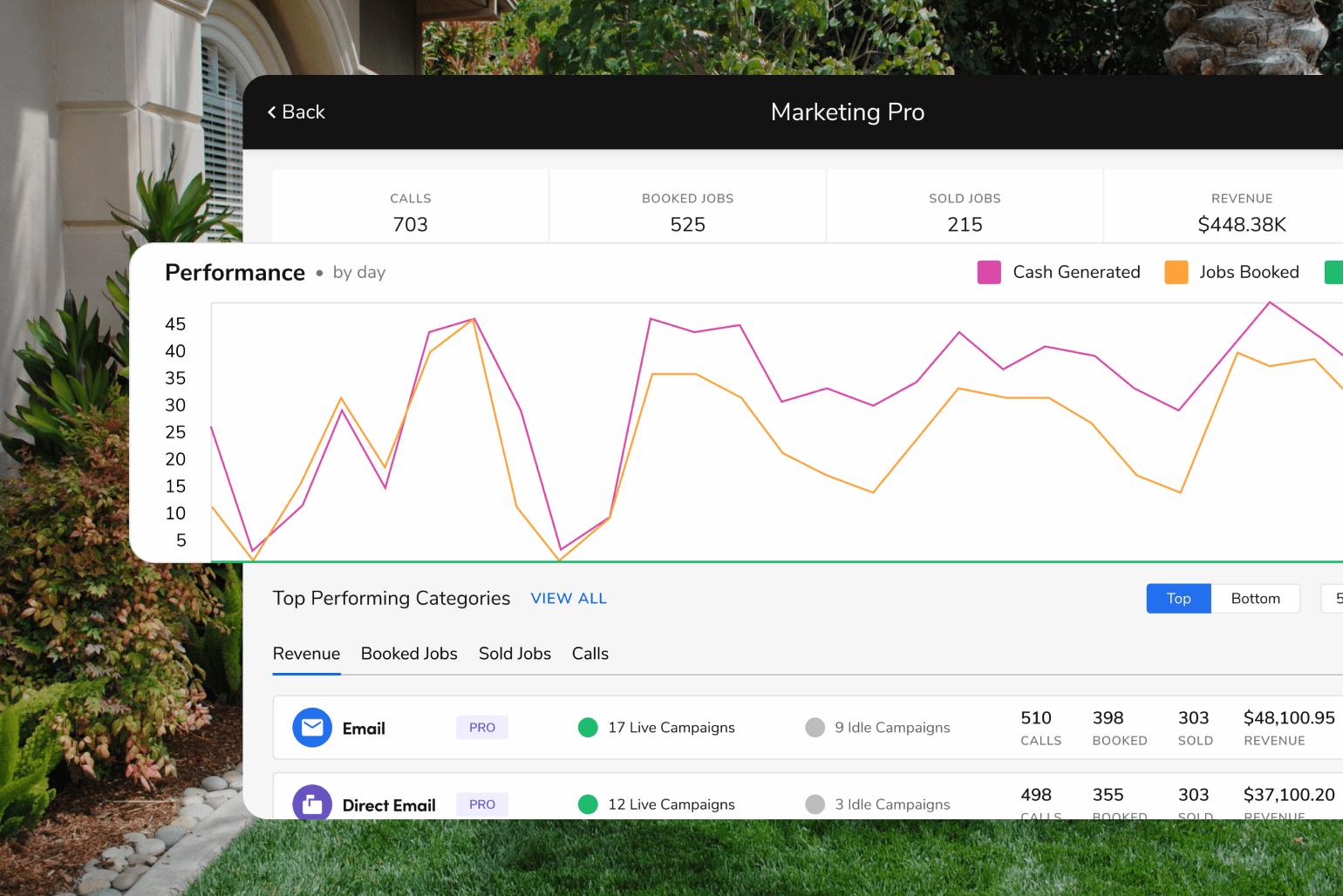The Best Marketing Strategies For Small Business

As a small business owner, you know how important it is to consistently attract new clients and customers to engage your services or buy your products. Whether you are a professional services provider, an established business owner with a sound reputation, or are getting a new wholesale or retail startup operation off the ground, you understand that a healthy business needs to develop and implement sound marketing strategies.
This article covers the best marketing strategies for a small business, beginning with an overview of why finding the right marketing tools for small businesses matters.
The Why Of Marketing Strategies Small Business
The term “marketing” covers a lot of ground — from traditional print, television, and radio advertising to media pitching and public relations to establishing a digital presence that creates brand awareness and encourages prospects to convert. Regardless of where you place your marketing resources, the ultimate goal is to lead your target customers — either directly or indirectly — to purchase whatever you are selling and then, when appropriate, keep coming back for more.
There are a number of reasons entrepreneurs should be concerned with finding the right marketing tools for small businesses. For instance:
Marketing increases brand awareness. If you are wondering how to spread the word about your business, consider the role of marketing in helping consumers connect your business name with your products or services. Positive brand awareness established through marketing helps consumers recognize your company and immediately connect with its positive attributes, such as your solid reputation for reliability.
Marketing attracts new customers and increases sales to existing customers.
Marketing not only lets potential new clients know what you have to offer, but it makes existing customers — often recognized as desirable low-lying fruit by your sales team — aware of all your attributes and offerings. Marketing increases the likelihood that loyal customers will expand their relationship with your small business.
Marketing helps level the playing field.
Competing for market share against larger and more established businesses can seem daunting. Marketing gives you the opportunity to go neck-to-neck with more prominent and better-known competitors, providing an avenue to tout your small business strengths like personalized service and community connections.
How Digital Marketing Can Help Your SME
Small and mid-sized enterprises (SMEs) are at a disadvantage when it comes to the amount of money they can spend on marketing verticals like print, television, radio, and digital display advertising. Larger companies, with their big advertising budgets, can afford to dominate when it comes to marketing through these traditional channels. Fortunately for smaller companies, digital SME marketing strategies can significantly level the playing field. A well-planned and professionally executed digital marketing campaign — one that bolsters your online presence and drives traffic to your website, your e-commerce site, your storefront, or your offices — is an affordable and effective marketing option for small businesses.
Key Marketing Tips For Small Business 2022
When it comes to building a strong marketing strategy, there is no “one size fits all” solution. In fact, before you start designing any kind of marketing protocol — especially a targeted digital marketing program— you should establish some parameters. Think about who you are targeting, why they should engage your services or buy your products, what constitutes a win, and how much you can spend.
Understanding Your Target’s Persona
The foundation of any good marketing strategy is knowing who your customer is, what attracts your buyer, where their interests lie, what their motivations are when making purchasing decisions, and how they react to different modes of communication.
Begin by creating a fictional version, a kind of avatar, of your target customer. Ask yourself:
What is this person’s age and gender identity?
What is their marital or relationship status?
Where do they live?
Do they have children?
What do they do for a living?
How much do they make?
Where do they get their information?
What do they do for fun?
What kind of values do they care about?
What are some of their biggest challenges?
The answers to these questions will guide you in creating a customer or buyer persona. Depending on your business, you might want to create more than one marketing persona, adopting the appropriate demographic details and behavioral traits for each.
Now, as you proceed with creating your marketing strategy, you can keep this persona (or these avatars) top of mind as you plan how and where to communicate with them and what messages are most likely to resonate with this prototypical target audience.
Determining Your Unique Selling Proposition
To stand out from the pack of competing businesses in your space, it helps to highlight your company’s or product’s unique selling proposition (USP). Not only will determining your USP help you to target your prospective customers, but it also establishes your place in the market while helping your sales team perfect how they will communicate with potential customers.
To develop a meaningful USP, think about your competitors, both large and small. What do you do differently and better? Be specific about the advantages you offer your customers. When defining your USP, make sure to:
Clearly state the product or service you’re offering
Develop a distinct buyer persona for your USP
Identify what customer problems your product or service solve
Emphasize the competitive advantages you can provide including, where relevant, cost, efficiency, customer service, reliability, previous track record, and current performance
When creating your USP statement, try to come up with a sentence or two that captures your customer-focused competitive advantage. How you convey this idea is just as important as what you are saying. Make it short, sweet, and memorable. A great example can be found in FedEx’s USP marketing slogan: When it absolutely, positively has to be there overnight.
FedEx’s USP statement clearly states the service being offered (overnight delivery service) and the problem it solves (absolutely, positively guaranteeing overnight delivery). The company is distinguishing itself — by innuendo — from other services that don’t always meet their delivery timing promises. Add in the fact that the slogan is easy to remember and is customer-focused, and you know you have a winning USP.
Setting Your Performance Goals
The distinguished management consultant Peter Drucker famously coined the saying, “You can’t manage what you can’t measure.” And this is certainly true when it comes to marketing strategy. To gauge whether you are on the right track, you will need to set performance goals and then continuously ask yourself whether you are meeting them.
Setting goals is not an exact science. Relating marketing outlays to return on investment (ROI) is not a linear process. That is why carefully selecting the right key performance indicators (KPIs) is so important when designing a marketing strategy. This applies to all sizes and types of businesses, including startups and SMEs.
For example, if your goal is to increase your email newsletter subscriptions by 20% over the course of three months, you can set this as a KPI. If your goal is to increase your search engine results page (SERP) rankings, you can set goals connected to increases in page views, organic traffic, and decreases in page bounces (more time spent on website pages).
Unless you set up a system that correlates your marketing plan to KPIs, you are operating in the dark with no way to know when or how to pivot when necessary to reach your objectives.
Determining Your Marketing Budget
Creating a marketing budget helps you avoid problems related to fulfilling your marketing strategies. If you don’t have sufficient funds, your efforts will fall short, and you won’t meet the KPIs you’ve set. When considering your budget, think about both direct and indirect expenses, like:
Marketing staff salaries and team member training
Office space and office equipment
Ad spends for Google ads, social media sponsorships, and banner ads
Affiliate marketing program payouts
Website creation and maintenance
Graphic design services
SEO experts
The cost of software to distribute and track marketing collaterals and communications
Creating and maintaining other marketing channels such as podcasts, email marketing campaigns, etc.
Determining how much money to allocate to marketing depends on several factors. With tools like FieldRoute’s marketing budget solutions, you can determine a solid marketing budget for your company based on your revenue history, revenue goals, and program parameters.
5 Ways To Build A Solid And Effective Small Business Marketing Strategy
Just because you’re small doesn’t mean you can’t compete with much larger companies in the digital marketing arena. As long as you are deliberate in design and implementation, allowing each of your strategies to feed off the others, you can build a solid and effective SME marketing program.
1. SEO
The purpose of SEO is to improve your online visibility so customers searching for your services and products will easily find your company on Google and other search engines. It’s one of the top ways to market SMBs.
SEO contemplates that you will optimize your presence on the internet — including your website and other web-based content — to increase your SERPs. The idea is that the higher you rank on Google, the more traffic you can drive to your website and the more sales you will make.
Tried and true SEO tactics include:
Creating a free Google My Business account
Create a free Yelp business account
Optimizing your own website with targeted content and local keywords
Asking clients and customers to post reviews on Google, social media sites, Yelp, and any other relevant online review sites
Focusing on getting high-quality backlinks (a link from another website to your site)
You may want to work with an SEO expert to help you establish an SEO system that generates backlinks, monitors (and responds to) reviews, and optimize your website. Note that Google and other search engines have become very sophisticated and will reject attempts to stack a lot of keywords onto a site or regurgitate previously posted content to game the SEO system.
2. Content Marketing
Since Microsoft founder Bill Gates declared that “Content is king!” back in 1996, serious digital marketers have devoted significant resources to content marketing. At its core, content marketing is the act of writing and publishing relevant, high-quality content that resonates with a particular target audience. The idea is that you provide something of value to this audience — an answer to a pressing question, a reliable “how-to” tutorial to help them solve a problem, a money-saving tip or two — and they, in turn, share this information with their network. This sharing helps raise your search engine rankings, and because you establish yourself as a trusted thought leader in your industry, your targets are more likely to seek information from you again and share the information again. The icing on the cake is they will also trust you to provide them with products and services they require, creating long-term relationships that will eventually translate into revenue.
The beauty of content marketing is that it allows smaller companies to flex their knowledge muscles and compete for the attention of customers. There is a wide range of content marketing formats to consider, including:
Blogs
Infographics
Eguides and white papers
Podcasts
Videos
Think about which vehicle might resonate most with the customer personas you’ve analyzed and start there. For example, if you’re promoting a musical instrument store, posting videos on YouTube of reviews of different guitars or that demonstrate how to tune a ukulele is probably preferable to a white paper or blog.
With any content marketing plan, you have to fold in SEO keywords and make sure you are posting the content with an optimized URL. Just make sure your content is valuable and trustworthy.
3. Pay-Per-Click Advertising
With pay-per-click (PPC) advertising, you can promote your small business through display ads on search engines like Google.
Here is how it works. You create ads around certain keyword phrases like “pest control” or “lawn care.” For Google ads, when and where your ads are displayed — their placement on the search engine results page (SERP) — will depend on Google’s algorithm. Every time someone clicks on your ad, you are charged.
Of course, you hope that the user clicks through to the relevant landing page and that they stay on that page long enough to do the action you are seeking, such as buy a product, read an article, or sign up for your email list. But none of that is guaranteed. Even if you don’t sell your services online following the user’s click, you are charged. The more popular the keyword is, the more likely it is to reach the top of the SERP. But that also means it will cost you more when someone clicks on your ad. Since PPC advertising can get pricey, many SEO experts recommend combining PPC advertising with a content marketing strategy to drive traffic to your site and your content which, it is hoped, they will then share and increase your organic SEO reach.
4. Social Media Marketing
Most small businesses leverage the power of social media to increase brand awareness and customer engagement. Choosing the right social media platform to focus your limited time resources on will depend on a number of factors, including where your target audience is most likely to land, the type of content you are producing, and where your presence can be most impactful.
It’s important to commit to every social media site you engage with. You’ll want to make sure that you restrict or monitor posts and comments, that your business information remains current, and that you acknowledge favorable reviews and react appropriately to any negative reviews. Popular platforms include:
Facebook
Instagram
YouTube
Twitter
TikTok
5. Email Marketing
By 2025, it is estimated that there will be 4.6 billion email users worldwide. It’s no wonder that email marketing is a popular way for businesses to reach out to existing and new customers.
One of the benefits of email marketing is the potential to build personal and long-lasting relationships with customers. Once somebody joins your email list — either because they purchased from you or joined to receive your content — you can reach out to them to promote new offerings going forward. When done correctly, email marketing can be a cost-effective business generator.
There are many ways to leverage your customer email lists. Some of the best include:
Separating your customers into different email lists based on purchase preferences, location, and other demographics
Using software solutions that allow you to preset email distribution parameters so you reach the right target at the right time with the right message
Create compelling email copy — including intriguing subject lines — so recipients are more likely to open and read your messages
Be judicious with your email timelines (don’t overdo the messaging or you will be blocked or reported as spam)
How to Spread Word About Your Business: 4 Creative Ways
When considering marketing strategy for small business examples, it’s important to recognize how vital word of mouth advertising has always been for local businesses. The stakes are even higher now that online reviews can make or break your reputation. If you want to increase your positive reviews, follow these four tips:
Walk your talk. Make good on your promises to provide excellent customer service. Nothing can send a business south faster than having a reputation for ignoring customer concerns or being too slow to fix a problem. Keep your word, and then each time you go above and beyond to make a client or customer happy, ask them to give you a shout-out on social media. You can even follow up with an email or text providing links to your Google, Yelp, Facebook, and other customer review pages.
Be reachable. Customers like to get their questions and concerns addressed right away. Keep lines of communication open and make sure a knowledgeable person is available to offer assistance at least during normal business hours. Be sure to engage with your customers on social media. If someone takes the time or trouble to post on your Facebook page or comment on your YouTube video, give them the courtesy of a reply. Not only will that enhance client interaction, but if you tag the user, you’ll extend your reach to their friends and contacts.
Clean up your act. First impressions mean everything, especially when you are looking for referrals. Whether you operate a sticks and bricks storefront or an online e-commerce site, how you present yourself matters. If you’re brick and mortar, you’re your place clean and inviting. If you’re online, keep your website updated, glitch-free, and decluttered with plenty of white space.
Contribute to your community. When it comes to up-close-and-personal interactions with customers, small businesses have a definite edge over multinational conglomerates. Get involved in community business and philanthropic organizations. Go the extra mile to help your fellow small business owners, and you are sure to benefit from the same type of hometown preferential treatment. Where appropriate, highlight your community service on social media and send out press releases to garner local media coverage.
Conclusion
Developing the best marketing strategy for a small business doesn’t have to be difficult. With the tips covered in this article, you can be well on your way to developing your own effective marketing strategies for a small business.
Whether your business is pest control, lawn care, pool, or anything in between, FieldRoutes has the software solution to help you grow your business and run a more efficient and profitable operation. Ready to learn more?
Schedule a free demonstration to see our pest control software and lawn care software in action.





